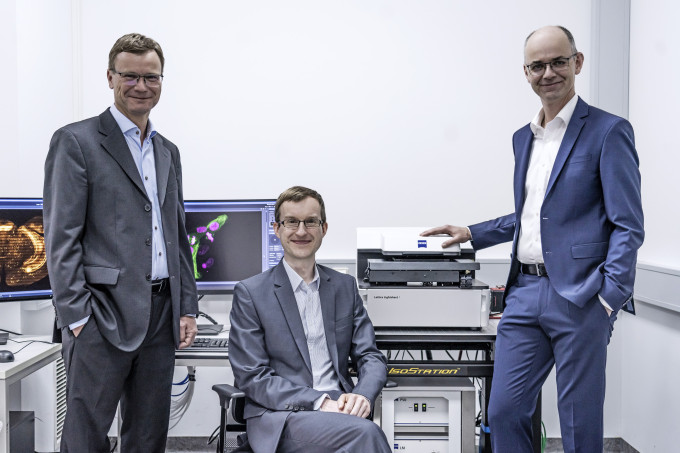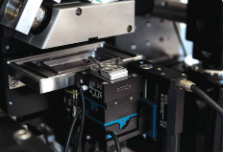PI is Important Technology Partner in Lattice Light Sheet Microscopy for Analysis of Living Cells
On October 26, 2022, the German Federal President Frank-Walter Steinmeier awarded the ‘Deutscher Zukunftspreis 2022’ (German Future Prize 2022) for the development of the new Lattice Light Sheet 7 microscope to the development team from Carl Zeiss Microscopy, Dr. Thomas Kalkbrenner, Dr. Jörg Siebenmorgen and Ralf Wolleschensky. This award again highlights this ingenious invention from Nobel laureate, Dr. Eric Betzig – a scientist who had won the Nobel prize of Chemistry 2014 for the invention of super-resolution fluorescence microscopy, together with Dr. Stefan Hell and Dr. William Mourner.
PI is an important technology partner for the development of this new, complex Lattice Light Sheet microscopy technology, which is also called Bessel Beam Plane Illumination microscopy. The Lattice light-sheet microscope goes back to an idea from Eric Betzig from the Howard Hughes Medical Institute on the Janelia Research Campus, (USA) during the years 2010 until 2013. Since then, Eric Betzig has been an important scientific customer and user of our piezo-based drives, which are precise to the nanometer, for his innovative super-resolution and his super-contrast microscopy systems, e.g. the Lattice Light Sheet microscope.
In 2014, the Howard Hughes Medical Institute on the Janelia Research Campus had signed an exclusive license agreement for the commercialization of the Lattice Light Sheet microscope with Carl Zeiss, Germany. At the same time, it was agreed that Carl Zeiss grants a sublicense to the US-company 3i, based in Denver, Colorado. 3i should sell and support a system based on the original design of Eric Betzig in a very timely manner and Carl Zeiss should develop a turn-key solution for the broader world market. As a consequence, 3i already introduced their original-design Lattice Light Sheet microscope to the market in 2015, including five precision drives from PI. Three drives to control sample position in x,y and z, and two others to scan either the objective or the specimen at high speed during image capture. E.g. PILine linear stages and DC-motor-based stages. In 2020, Carl Zeiss, about five years later, introduced their turn-key style Lattice Light Sheet 7 in a modified design to the market, using different precision drive solutions and then won the German Future prize in 2022 for this version of the system.
The Lattice Light Sheet Microscope is a milestone in life science. For the first time, researchers are able to observe living cells, both live and in 3D for hours and days. Using the special technique of light sheet microscopy, the usually very high light intensity of fluorescence microscopy is reduced to such an extent that the cells being observed can no longer be damaged. In this way, researchers, for example, examine cellular metabolism in healthy and pathological processes, how cells react to certain substances, and how they deal with viruses or bacteria. This is made possible by a two-dimensional, latticed system of laser beams for the light sheet type of fluorescence excitation. To do so, laser beams following a Bessel function are influenced using a light-space modulator and are scanned through the living sample.
PI again is an important technological partner and enabler of a technological break-through for humanity.
Contact person: Dr. Thomas Bocher, Director Segment Marketing – Global

